

Are you intrigued by the diverse world of animals? We will be exploring the world of animals starting with I! From majestic mammals to fascinating insects and everything in between, join us as we learn about the incredible creature that inhabit our planet.
Animals Starting with I
There are so many incredible animals starting with I. Let’s take a closer look at each of them.
Iguana


Iguanas are fascinating reptiles that can be found in tropical regions around the world. These large, herbivorous creatures have a unique appearance with their long tails, spines along their back, and a prominent dewlap. They are mainly arboreal, meaning they are well adapted to living in trees.
BE PSLE-READY: Join Expert Educators for Revision Boosters to Empower P6 Students
BURP: Join the Sound Collector on a Whimsical Chase at Esplanade – Theatres on the Bay
WEEKEND IDEAS: Get Inspirational Ideas of Things to Do
One of the most interesting behaviors of iguanas is their habit of basking in the sun. They spend a significant amount of time on tree branches, soaking up the sunlight to regulate their body temperature. This tree-dwelling behavior allows them to stay warm and active throughout the day.
When it comes to their diet, iguanas are strict herbivores. They primarily feed on leaves, fruits, and flowers, making them an important part of the ecosystem as seed dispersers.
While iguanas are often kept as pets, they require specialized care due to their specific dietary and environmental needs. Providing them with a suitable habitat that mimics their natural tree-dwelling lifestyle and offering a varied diet rich in vegetation is crucial for their well-being.
It’s also worth mentioning that not all iguanas are strictly tree-dwelling. Some species, like the marine iguana, can swim and dive to find food. These unique adaptations allow them to thrive in the diverse habitats of tropical regions.
Impala


Impalas are medium-sized antelopes commonly found in savannah habitats in Africa. With their reddish-brown coat and white markings on their face, throat, and underbelly, they are easily recognizable in their natural habitat. Male impalas have curved horns, while females are hornless.
As herbivores, impalas primarily feed on grass, leaves, and fruits. They have adapted to their savannah environment, grazing on the abundant vegetation available. Their diet ensures they receive the necessary nutrients to thrive in their habitat.
One of the most fascinating aspects of impalas is their incredible leaping ability. Known for their exceptional agility, they can jump up to 10 feet in the air and cover distances of 30 feet in a single bound. This leaping ability helps them navigate their surroundings and evade predators.
Impalas are social animals that form large herds for safety and protection against predators. Moving together as a group enhances their chances of survival. They communicate through a variety of vocalizations, postures, and signals, ensuring their collective well-being.
Overall, impalas are magnificent creatures that showcase the beauty of the African savannah. Their unique characteristics, such as their herbivorous diet and impressive leaping ability, make them an integral part of their ecosystem.
Ibis
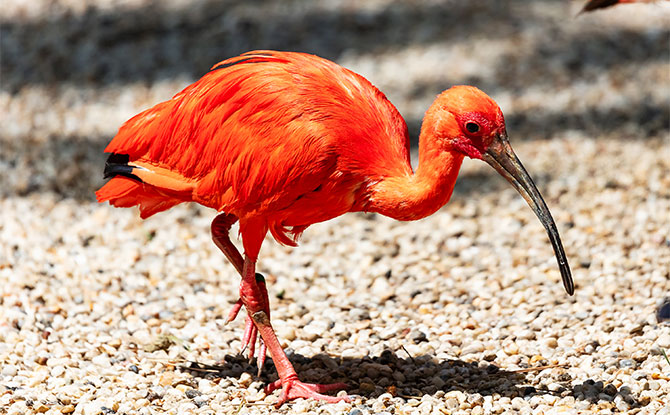

Ibises are fascinating wading birds that can be found in wetland habitats all around the world. They are known for their long legs and necks, which allow them to navigate through shallow water with ease. One of the most distinctive features of ibises is their long curved bill, which is specially adapted for catching prey in the water. These remarkable birds use their bill to search for and capture fish, mollusks, and insects.
Many species of ibises are monogamous and form breeding pairs that remain together throughout the breeding season. During this time, they establish and defend their territories, showcasing their dedication and loyalty to their partners. Ibises are also known for their communal behavior, often roosting and nesting in large colonies. These colonies provide safety in numbers and allow the birds to coordinate their activities.
One iconic species of ibis is the scarlet ibis, known for its vibrant plumage. Its bright red feathers create a breathtaking display against the backdrop of its wetland habitat. These beautiful birds are a testament to the diversity and beauty of the natural world.
Irish Setter


The Irish Setter is a medium to large-sized dog breed known for its beautiful red coat and friendly temperament. Originally bred as a hunting and sporting dog, the Irish Setter is known for its excellent tracking and retrieving abilities in the field.
One of the most distinctive features of the Irish Setter is its striking red coat, which is long, silky, and requires regular grooming to keep it looking its best. Their elegant appearance and flowing coat make them a favorite among dog enthusiasts and owners.
In addition to their stunning coat, Irish Setters are known for their friendly and sociable nature. They are social dogs that thrive on human companionship and are generally very affectionate with both people and other animals. They are often described as playful, outgoing, and highly trainable.
With their high energy levels, Irish Setters require regular exercise to keep them physically and mentally stimulated. They enjoy activities such as long walks, runs, and playing fetch. This breed is well-suited for active individuals or families who can provide them with ample exercise opportunities.
When properly trained and socialized, Irish Setters can be excellent family pets and companions. They are known for their loyalty and devotion to their owners, making them a loving addition to any household. However, their high energy levels and need for mental stimulation means they may not be suitable for everyone.
In conclusion, the Irish Setter is a beautiful and friendly dog breed that requires regular exercise and grooming to thrive. With their striking red coat, friendly temperament, and high energy levels, Irish Setters make wonderful companions and are well-suited for active individuals and families.
Isopod
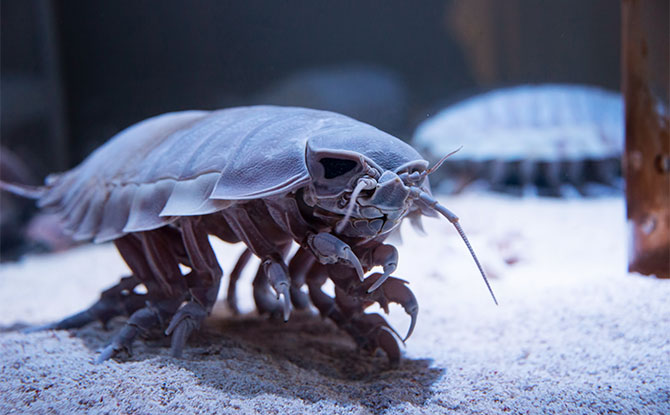

Isopods are a group of small crustaceans found in various environments, including marine, freshwater, and terrestrial habitats. These fascinating creatures have a segmented body covered by a hard exoskeleton, which provides protection and support. Isopods are well-known for their ability to roll up into a ball when threatened, a behavior commonly seen in pill bugs and sow bugs.
One of the interesting aspects of isopods is their role as decomposers. Many species of isopods feed on dead plant and animal matter, playing a vital role in nutrient recycling. They break down organic material and contribute to the decomposition process, helping to return valuable nutrients back into the ecosystem. Their activities have a significant impact on the health and functioning of ecosystems.
Isopods can be found in a variety of habitats. In coastal areas, they can be seen in tide pools, under rocks, and in damp soil. Some isopods have adapted to marine environments and inhabit the deep sea, where they can reach impressive sizes. For example, the giant isopod is a species that can grow to be quite large.
Isopods are fascinating crustaceans that play important ecological roles as decomposers. Their ability to thrive in different environments and contribute to nutrient recycling makes them valuable members of various ecosystems. Whether you encounter them in the ocean, a freshwater stream, or your backyard, take a moment to appreciate the important role these tiny creatures play in the natural world.
Indian Elephant
Indian Elephants, also known as Asian Elephants, are one of the largest land animals on Earth. They are found in various countries in Asia, including India, Sri Lanka, Nepal, and Thailand. Indian Elephants have long trunks, large ears, and distinctively curved tusks.
These majestic creatures are herbivores, feeding on a diet of grasses, fruits, leaves, and bark. With their massive size and strength, Indian Elephants play a vital role in shaping their ecosystems by dispersing seeds and creating open clearings.
Indian Elephants are highly intelligent and social animals, living in matriarchal family groups led by a dominant female. They exhibit complex social behaviors and have a strong sense of community within their herds.
Indian Rhinoceros
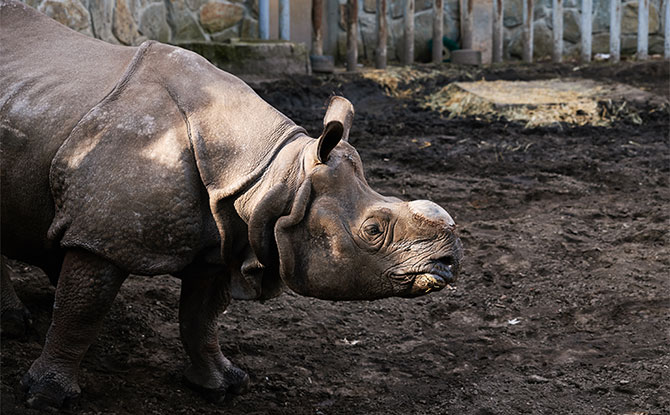

The Indian Rhinoceros, also known as the one-horned rhinoceros, is a large herbivorous mammal found in parts of India and Nepal. It is named for its distinctive single horn, which can reach lengths of up to 24 inches. With a thick skin adorned with folds and plates, the Indian Rhinoceros is well-equipped to defend itself against predators.
Feeding exclusively on a herbivorous diet, the Indian Rhinoceros primarily consumes grasses, leaves, and fruits. Its large size allows it to consume vast quantities of vegetation to sustain its energy needs.
The Indian Rhinoceros is currently critically endangered due to habitat loss and the illegal poaching of its horn, which is highly coveted in some cultures for its perceived medicinal properties.
Ivory-Billed Woodpecker
The Ivory-Billed Woodpecker is a large woodpecker species endemic to the southeastern United States and Cuba. With its distinctive black and white plumage, this critically endangered bird is a sight to behold. The male Ivory-Billed Woodpecker stands out with a bright red crest that adds a pop of color to its striking appearance.
Once abundant across its range, the Ivory-Billed Woodpecker population has significantly declined in recent years. Today, there have been only a few unconfirmed sightings, adding to the mystery surrounding this magnificent bird.
Insect
Insects are a diverse group of invertebrates that make up the largest class of animals on Earth. They play a crucial role in ecosystems as pollinators, decomposers, and as a food source for other animals.
Insects have a characteristic body structure with three main body parts: the head, thorax, and abdomen. They are defined by their six legs, which are attached to the thorax.
One fascinating characteristic of insects is their ability to undergo metamorphosis, meaning they go through different life stages. This includes the egg stage, followed by the larva stage, pupa stage, and finally, the adult stage. Each stage serves a specific purpose in the insect’s life cycle.
Insects can be found in almost every habitat on Earth, from forests to deserts to freshwater ecosystems. They have adapted to various environmental conditions and have diversified into countless species to exploit different niches.
Examples of insects include butterflies, bees, ants, beetles, and flies. They come in different shapes, sizes, and colors, showcasing the immense diversity within this group.
Island Fox
The Island Fox is a small fox species endemic to six of the Channel Islands in California, USA. It is the smallest fox species in North America, with a distinctive reddish-brown coat and a bushy tail.
Each island has its own unique subspecies of island fox, adapted to the specific environment and available resources.
Island Fox populations faced significant declines due to predation by introduced species and habitat loss. However, intensive conservation efforts, including captive breeding and habitat restoration, have led to population recovery.
The Island Fox is considered a conservation success story and a symbol of the unique biodiversity of the Channel Islands.
Indian Cobra
The Indian Cobra, also known as the spectacled cobra, is a venomous snake species found in India and neighboring countries. It is one of the most iconic snake species in the world, known for its hooded appearance and distinctive markings on its head. Indian Cobras are highly venomous and can inject a potent neurotoxin through their fangs.
Despite their dangerous reputation, Indian Cobras play an important role in controlling rodent populations, helping to maintain the balance of ecosystems. These snakes are often associated with snake charmers, who perform with them as part of traditional cultural practices in India. However, it’s important to note that these performances can be harmful to the snakes and may perpetuate the illegal wildlife trade.
Indian Cobras are protected under wildlife conservation laws, and efforts are being made to reduce human-snake conflicts and promote coexistence. These snakes should be respected and admired from a safe distance, as they are fascinating creatures that contribute to the biodiversity of their habitats.
Irukandji Jellyfish
The Irukandji jellyfish is a small species of jellyfish found primarily in Australia and parts of the Pacific Ocean. Despite their small size, Irukandji jellyfish are considered one of the most venomous creatures in the world. Their stings can cause a condition known as Irukandji syndrome, which includes symptoms such as severe pain, nausea, vomiting, and cardiac problems. Irukandji syndrome can be life-threatening and requires immediate medical attention.
Due to their small size, Irukandji jellyfish are often difficult to detect in the water and can cause accidental stings to swimmers and divers. Strict safety precautions are necessary to prevent marine envenomation.
Ibisbill
The Ibisbill is a unique and fascinating shorebird species that can be found in the high-altitude regions of the Himalayas in Asia. With its distinct bill shape, which curves downwards and resembles that of an ibis, the Ibisbill stands out amongst its feathered counterparts.
Ibisbills are perfectly adapted to their fast-flowing river habitats, using their long legs and sharp bills to expertly catch small invertebrates that make up their insectivorous diet. Their brown and white coloration provides excellent camouflage against the rocky riverbeds, making them difficult to spot.
One of the most intriguing features of the Ibisbill is its unique vocalizations. Their haunting calls echo through the valleys, adding to the mystique of these incredible birds. Additionally, during their courtship rituals, Ibisbills perform an unusual “dance” display, further showcasing their captivating nature.
Unfortunately, the Ibisbill population is currently facing challenges due to habitat destruction and disturbance. As a result, these remarkable shorebirds are considered a vulnerable species, highlighting the need for conservation efforts to protect their dwindling numbers.
Irish Wolfhound
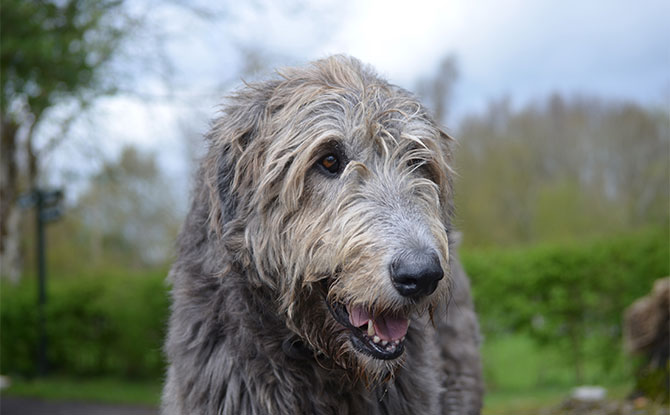

The Irish Wolfhound is a giant dog breed known for its impressive size, noble appearance, and gentle temperament. With males standing at least 32 inches tall at the shoulder, they are one of the tallest dog breeds.
Irish Wolfhounds have a long history dating back thousands of years. Originally used for hunting wolves and Irish elk, they have a significant historical significance. Despite their historical roles as hunters, Irish Wolfhounds are known for their friendly and gentle nature, making them excellent family pets.
While they require regular exercise to stay healthy and happy, Irish Wolfhounds are generally calm and easygoing dogs. However, it’s important to note that their large size makes them prone to certain health issues, including heart problems and joint conditions.
Icelandic Horse
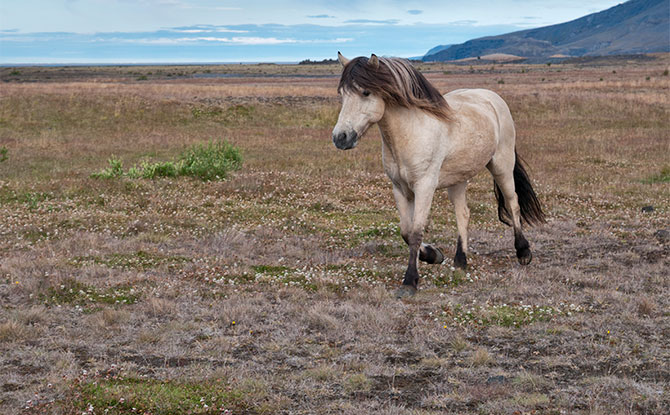

The Icelandic Horse is a unique breed of pony-sized horses that originated in Iceland. These horses are known for their distinctive appearance, including a thick double coat and a luxurious mane and tail. They have a rich history that dates back over a thousand years, making them an ancient breed with cultural and historical significance.
One of the most remarkable attributes of Icelandic Horses is their ability to perform five gaits. In addition to the traditional walk, trot, and canter, Icelandic Horses can also perform the tölt and the flying pace. The tölt is a smooth, four-beat running walk that offers a comfortable and efficient way to travel long distances. The flying pace is a fast and exhilarating gait that allows the horse to reach impressive speeds.
Icelandic Horses are a hardy and versatile breed, well-suited to the challenging Icelandic climate. They have developed a sturdy constitution and a thick double coat that helps them withstand harsh weather conditions. These horses have a strong Viking heritage and were bred by the early settlers of Iceland, who relied on them for transportation, agriculture, and even war.
Today, Icelandic Horses continue to be highly valued in Icelandic culture. They are treasured for their gentle nature, intelligence, and willingness to please. Icelandic Horse shows and competitions are popular events that celebrate the beauty, talent, and unique characteristics of this remarkable breed. Whether used for riding, driving, or simply as companions, Icelandic Horses hold a special place in the hearts of horse enthusiasts around the world.
Italian Greyhound
The Italian Greyhound is a small toy breed of dog known for its slender body, elegant appearance, and affectionate temperament. They are one of the oldest and smallest sight-hound breeds, with a history dating back over 2,000 years.
Italian Greyhounds have a unique combination of speed and grace. Despite their small size, they are capable of reaching high speeds and are often used in dog racing competitions. Their slender build and long legs make them well-suited for running.
In addition to their athletic abilities, Italian Greyhounds are also known for their affectionate and sensitive nature. They form close bonds with their owners and thrive on companionship. They are often described as “velcro dogs” because of their desire to be close to their humans at all times. This makes them excellent family pets and companions.
Italian Greyhounds are considered a toy breed due to their small size. They typically weigh between 7 and 14 pounds and stand about 13 to 15 inches tall at the shoulder. Their small size makes them well-suited to apartment living, as they require less space compared to larger dog breeds.
As sighthounds, Italian Greyhounds have a natural prey drive and may be prone to chasing small animals. It is important to keep them on a leash or in a securely fenced area when outside to prevent them from running off after something that catches their eye.
Indian Peafowl
The Indian Peafowl, also known as the peacock, is a large and colorful bird species native to South Asia. They are famous for their vibrant and iridescent plumage, which features striking blue and green colors with eye-like patterns.
Male peafowls, known as peacocks, have extravagant tails that can be displayed in a spectacular courtship dance to attract mates. These courtship displays involve the peacock fanning its tail feathers and performing elaborate movements.
Indian Peafowls hold significant cultural and symbolic importance in many South Asian countries. In India, they are revered and considered the national bird. They symbolize beauty, grace, and nobility.
Indian Peafowls are omnivorous birds, feeding on a varied diet that includes seeds, fruits, insects, and small reptiles. They have adapted to a wide range of habitats and can be found in forests, grasslands, and agricultural areas.
These birds are known for their loud and distinctive calls, which are often heard during the breeding season. The peacock’s calls consist of a series of high-pitched cries and trills that echo through the surrounding landscape.
Indian Star Tortoise
The Indian Star Tortoise is a medium-sized land tortoise species found in the dry regions of India and Sri Lanka. It is named for the unique star-like pattern on its high-domed shell, which provides camouflage in its natural habitat. Indian Star Tortoises are herbivores, feeding on a diet of grasses, leaves, and flowers. They are known for their ability to dig burrows, which provide shelter and protection from extreme temperatures.
Irish Terrier
The Irish Terrier is a medium-sized dog breed known for its unique appearance and lively personality. These dogs have a distinctive red, wiry coat that requires regular grooming to maintain its texture. Irish Terriers are energetic and intelligent, which makes them excellent companions for active individuals and families.
As a terrier breed, Irish Terriers have a strong instinct for hunting and digging. They are considered one of the oldest terrier breeds, with a rich history in Ireland. While they may be small in size, they have a bold and fearless nature. Irish Terriers are known for their playful and mischievous personalities, and they can be quite entertaining and amusing to be around.
Irish Terriers are also highly intelligent dogs that thrive on mental stimulation. They are quick learners and enjoy training sessions that challenge their minds. This intelligence, combined with their energetic nature, makes Irish Terriers excel in various activities such as agility, obedience, and even hunting.
In addition to their active and intelligent qualities, Irish Terriers are generally friendly and outgoing. They tend to get along well with people and other animals, although early socialization and training are essential to ensure they develop proper behavior. Irish Terriers can be affectionate and loyal to their families, making them great companions for those seeking a lively and spirited dog.
Indian Pangolin
The Indian Pangolin, also known as the scaly anteater, is a unique mammal found in South Asia. It has a distinctive appearance with overlapping scales covering its body, which serve as protection against predators. Indian Pangolins are primarily nocturnal, coming out at night to forage for ants and termites. They have a long, sticky tongue that is used to capture their prey. Indian Pangolins are threatened by habitat loss and poaching for their scales, which are highly valued in traditional medicine. They are listed as a vulnerable species, and efforts are underway to protect their populations and raise awareness about their conservation.
Inca Dove
The Inca Dove is a small dove species found in parts of North and Central America. It has a distinctive sandy brown plumage with scaled patterns on its wings and a long, pointed tail. Inca Doves are known for their gentle and non-aggressive nature, often coexisting peacefully with other bird species. They are primarily ground-feeders, foraging for seeds, grains, and insects on the ground. Inca Doves have successfully adapted to urban environments, often found in parks, gardens, and residential areas. They have a soft and melodious cooing call, which is a common sound in their habitats.
Irrawaddy Dolphin
The Irrawaddy Dolphin is a species of dolphin found in the coastal waters and rivers of Southeast Asia. It is known for its unique appearance, with a round head, short beak, and a prominent melon on its forehead. These fascinating creatures inhabit both marine and brackish water habitats, including estuaries and river mouths.
One of the distinctive features of Irrawaddy Dolphins is their friendly and playful nature. They often exhibit curious behaviors around boats and humans, making them a delight to encounter.
Irrawaddy Dolphins employ a unique feeding technique called “fish herding.” Unlike other dolphins that rely on speed and agility to catch prey, Irrawaddy Dolphins chase schools of fish towards the shore. This behavior allows them to corral their prey in shallow waters, making it easier to capture and feed on.
Ichneumon Wasp
The Ichneumon Wasp is a diverse family of parasitic wasps found worldwide. With thousands of species, each with its own unique behavior and host insect, these wasps play an important role in ecosystems as natural pest control agents.
Ichneumon Wasps are parasitoids, which means they lay their eggs on or inside other insects. Once the eggs hatch, the wasp larvae develop and feed inside the host insect, eventually leading to its demise. This unique reproductive strategy allows the Ichneumon Wasps to regulate populations of pest insects and maintain ecological balance.
Despite their intimidating size and appearance, Ichneumon Wasps are generally harmless to humans. They are solitary and avoid confrontation with humans, focusing instead on their role as valuable contributors to natural ecosystems.
The Ichneumon Wasp family is incredibly diverse, with variations in size, coloration, and behavior. From tiny species to those with impressive wingspans, these wasps have adapted to various environments and host insects. This diversity allows for effective pest control across a wide range of ecosystems.
Overall, Ichneumon Wasps are fascinating and beneficial creatures that demonstrate the intricacies and wonders of the natural world. Their ability to parasitize and control populations of pest insects showcases the complexity and delicate balance of ecosystems.
Iriomote Cat
The Iriomote Cat is a small and critically endangered wildcat species found exclusively on Iriomote Island in Japan. It is one of the rarest and least-known cat species in the world, with an estimated population of fewer than 250 individuals.
Iriomote Cats have a distinctive appearance with a dark coat, rounded ears, and a long tail with ringed markings. They are highly adapted to their island habitat, with excellent tree-climbing and swimming abilities.
Iriomote Cats are nocturnal and elusive, making them difficult to study and observe in the wild. Conservation efforts are focused on protecting their remaining habitat and raising awareness about their conservation status.
Indian Palm Squirrel
The Indian Palm Squirrel is a small rodent species found throughout the Indian subcontinent. With its distinctive appearance, this squirrel sports a bushy tail and a combination of grey, brown, and white fur.
Indian Palm Squirrels are highly active during the day, showcasing their diurnal behavior by darting among trees and buildings. These arboreal animals primarily live in trees, where they feed on a diet consisting of fruits, nuts, and seeds.
One remarkable aspect of these squirrels is their adaptability. Indian Palm Squirrels have successfully colonized urban environments and have become a common sight in gardens, parks, and even residential areas. Their widespread distribution across the Indian subcontinent reflects their ability to thrive in diverse habitats.
Ibex
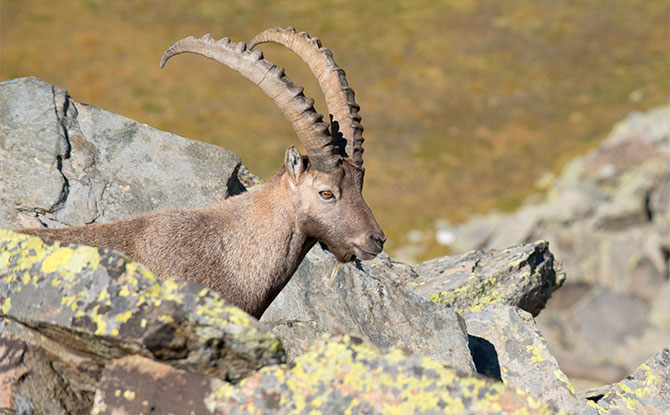

Ibex are wild goats found in mountainous regions across Europe, Asia, the Middle East, and Northern Africa. Their habitat in the mountains allows them to display their impressive climbing abilities, as they navigate steep slopes and cliffs with ease. Ibex have distinctive curved horns, which are longer and more prominent in males. These horns serve multiple purposes, including defense against predators and establishing dominance within their social groups.
Their skilled climbing and jumping abilities enable them to scale vertical walls and make impressive leaps, making them appear almost gravity-defying. Ibex primarily feed on grasses and plants, foraging along the slopes of the mountains they call home. They have adapted to their challenging mountain habitat, with specialized hooves for gripping onto rocky surfaces and maintaining balance.
Inchworm
The Inchworm, also known as a measuring worm or looper, is the larval stage of a geometrid moth. They are commonly found crawling on leaves and branches, earning their name from their distinctive looping movement. Inchworms are herbivorous and feed primarily on leaves, often skeletonizing them by eating the fleshy portions. They play an important role in ecosystems as decomposers, benefiting the breakdown of organic matter. Inchworms undergo a complete metamorphosis, eventually transforming into an adult moth. They are found in diverse habitats and are easily recognized by their characteristic body shape and movement.
Island Canary
The Island Canary is a small songbird species native to the Canary Islands in the Atlantic Ocean. It is closely related to other canary species and is often kept as a pet for its melodious songs. Island Canaries have a bright yellow plumage, which varies in intensity across different subspecies. They are highly vocal birds, known for their melodic and varied songs. Island Canaries are social animals and are often kept in pairs or small groups. They require proper care and a balanced diet to thrive in captivity.
Indian Giant Squirrel
The Indian Giant Squirrel is a fascinating arboreal mammal that can be found in the forests of India and Sri Lanka. With its brightly colored fur patterns and large body size, this squirrel is truly a sight to behold. Measuring up to 3 feet in length, the Indian Giant Squirrel is one of the largest squirrels in the world.
These forest-dwelling creatures are herbivores, and their diet consists of seeds, nuts, fruits, and tree bark. Their strong limbs allow them to climb trees with ease, and they are also skilled gliders, traversing from tree to tree using their long, bushy tail.
Indian Giant Squirrels are known for their shy and elusive nature, making them a challenge to spot in the dense forest canopy. However, their brightly colored fur helps them blend into their surroundings while adding a touch of vibrancy to the forest ecosystem.
Indian Bullfrog
The Indian Bullfrog is a large frog species native to South Asia, including India, Pakistan, and Bangladesh. Known for its robust build and distinctive call, the Indian Bullfrog is an intriguing amphibian. With its nocturnal behavior, it primarily comes out at night to forage for insects and other small invertebrates. Its powerful jumping ability allows it to quickly capture prey in its insectivorous diet. The Indian Bullfrog undergoes metamorphosis, starting as tadpoles in water and transforming into adult frogs. This species plays important roles as both predator and prey in its ecosystems.
Iceland Gull
The Iceland Gull is a medium-sized gull species that breeds in the Arctic regions and migrates south for the winter. It is known for its pristine white plumage, which helps camouflage it against the snowy landscapes of its breeding grounds.
Iceland Gulls primarily feed on fish, insects, and other marine invertebrates. They can be found in coastal areas, estuaries, and large bodies of water during their winter migration. Iceland Gulls are social birds, often seen in large flocks. They are adapted to cold environments and have specialized features such as thick feathers and waterproof plumage.
Indian Flying Fox
The Indian Flying Fox is a fascinating species of fruit bat that can be found in South Asia, including India, Sri Lanka, and Bangladesh. It is known for its impressive size, with a wingspan that can reach up to 4 feet. As one of the largest bats in the world, the Indian Flying Fox has a significant impact on its ecosystem.
Indian Flying Foxes are nocturnal creatures, meaning they are most active during the night. This behavior allows them to take advantage of the abundance of fruits, nectar, and flowers that are available during the dark hours. Their herbivorous diet of fruits and nectar not only sustains them but also plays a crucial role in pollination and seed dispersal in their native habitats.
When it comes to roosting, Indian Flying Foxes have some unique habits. They often form large colonies in trees, caves, and man-made structures. These colonies can consist of thousands of individuals, creating an impressive sight. Despite their size, Indian Flying Foxes are generally harmless to humans and have a gentle demeanor.
In conclusion, the Indian Flying Fox is a remarkable species of large fruit bat with nocturnal behavior and a herbivorous diet. Its roosting habits in large colonies contribute to the unique ecology and biodiversity of South Asia.
Irish Water Spaniel
The Irish Water Spaniel is a medium-sized dog breed renowned for its distinct appearance and exceptional water-retrieving abilities. With its curly coat providing insulation and protection, these intelligent and playful dogs are well-suited for swimming in cold waters.
Originally bred as water retrievers for hunters, Irish Water Spaniels showcase problem-solving skills and a strong desire to please. Their eagerness to swim and retrieve makes them invaluable companions during waterfowl hunting expeditions.
Irish Water Spaniels thrive on regular exercise and mental stimulation, especially in environments where they have access to water for swimming and retrieving activities. Their friendly and sociable nature makes them ideal family pets, particularly for active households.
If you enjoyed this story, we think that you will also enjoy this on animals starting with H.




















